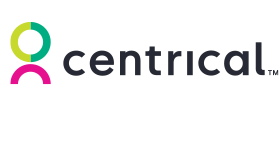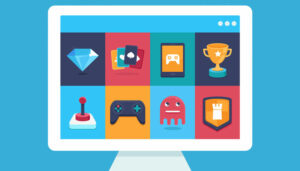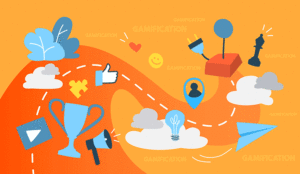Gamification is more than a growing buzzword – it is a smart, effective strategy to boost performance through increased motivation and engagement.
Despite its name, gamification is much more than points, badges, and a spot on the leaderboard. Successful gamification drives long-term behaviors and provides a truly personalized and consistent employee experience.
In addition to motivating and engaging the workforce, gamification doesn’t just tell people how they are doing – it tells them how to get better and move up.
In this article, we’ll discuss some basics around LMS gamification, its impact on employees and the overall organization, and how you can integrate gamification into your organization’s LMS.
What Is LMS Gamification?
LMS gamification, at its core, is the inclusion of game mechanics into learning and development initiatives through learning management systems (LMS).
With features such as leaderboards, badges, and rewards, gamification fosters a friendly, competitive vibe, encouraging participation and enabling more effective learning and development.
The Impact and Benefits of LMS Gamification
LMS gamification revolutionizes corporate training and development initiatives and processes by offering a flexible and efficient learning platform that motivates and engages the workforce.
Additionally, the way we work is still shifting, with a diverse population of employees working on-site, remotely, and in hybrid models, making it essential for organizations to adapt their training methods.
LMS platforms provide an accessible, centralized hub for learning materials that supports a range of multimedia content, from videos to interactive quizzes, enhancing the learning experience.
Moreover, LMS software facilitates tracking and analysis of employee progress, helping organizations identify skill gaps and tailor their training programs accordingly.
LMS gamification takes all of these capabilities to the next level, offering many additional benefits that include:
- Increased motivation and engagement
- Reduced forgetting curve with spaced repetition quizzing tools
- A personalized learning experience, with the right training delivered at the right time
- Real-time performance insights that tell employees where they are and how to progress
- Transparency around progress that helps facilitate effective and meaningful coaching sessions
- Sustainable development of long-term habits and behaviors, leading to a consistent performance
Finally, it is important to note that LMS gamification also creates a much more effective and efficient learning and development process with targeted actions.
For instance, let’s take a large new hire class where 30% of the new hires are having trouble with an area of training.
Rather than slow the process down for the 70% that comprehend a topic, platforms will re-train the smaller group of new hires while the larger group can move forward with their training.
This not only accelerates time to proficiency but is delivered within the flow of work, allowing new hires to complete their modules in a few minutes between calls.
All of this leads to more effective training, accelerated time to proficiency, and better employee performance overall, ultimately contributing to the company’s growth and success.
Choosing the Right LMS Gamification Platform
Choosing the right LMS gamification platform for your workplace hinges on understanding your specific needs and goals – and your existing technology.
The first thing to consider is whether your organization needs a gamification platform to act as the LMS, or if the platform can integrate gamification into your existing LMS technology.
A few things to consider when selecting a platform:
- Evaluate your organization’s learning objectives, the desired outcomes from the training, and expectations.
- Look for customizable gamification features like running narratives and milestone-related rewards to keep learners engaged and motivated.
- Consider user-friendliness. A platform that is easy to navigate ensures higher adoption rates.
- Ensure that the platform offers a mobile and desktop experience
- Integration into existing systems and scalability to grow with your company are also key factors.
- Additionally, check for robust reporting and analytics tools to track progress and measure the impact of your training programs.
- Finally, don’t overlook the importance of reliable customer support from the platform provider to ensure smooth implementation and ongoing management.
Examples of Successful LMS Gamification
Successful LMS gamification examples highlight how integrating game-like elements into learning management systems can lead to remarkable results in engagement and knowledge retention.
For instance, a well-known tech company implemented points and recognition capabilities into their LMS, leading to a 50% increase in course completion rates.
Another example is a global retail chain that introduced leaderboard challenges for sales training, significantly boosting employee participation and performance.
A financial services firm used custom badges and achievement tracking, which enhanced learner engagement and improved compliance training outcomes.
These examples demonstrate the power of gamification in transforming learning experiences, fostering a competitive yet collaborative environment, and effectively meeting organizational training goals.
Summary and Key Takeaways
LMS gamification is a smart strategy for organizations to boost employee motivation, engagement, and performance.
A few key takeaways:
- Gamification is more than a leaderboard, providing employees with a personalized learning and performance experience.
- LMS gamification creates a more efficient and impactful learning experience by targeting individual knowledge and performance gaps, automatically sending the right materials at the right time.
- When selecting a platform, determine if your organization needs an LMS, or an integrable solution to enhance existing learning
- Other things to consider when selecting an LMS gamification platform include organizational goals and desired outcomes, the right analytics and progress tools, and whether the platform goes beyond the leaderboard to offer advanced gamification options.
This blog post has been re-published by kind permission of Centrical – View the Original Article
For more information about Centrical - visit the Centrical Website
Call Centre Helper is not responsible for the content of these guest blog posts. The opinions expressed in this article are those of the author, and do not necessarily reflect those of Call Centre Helper.
Author: Centrical
Published On: 15th Mar 2024 - Last modified: 6th Dec 2024
Read more about - Guest Blogs, Centrical






 Centrical provides a real-time performance management, microlearning, gamification, coaching, and voice of the employee platform for frontline teams. The solution inspires and personally guides employee success and growth by making every moment actionable.
Centrical provides a real-time performance management, microlearning, gamification, coaching, and voice of the employee platform for frontline teams. The solution inspires and personally guides employee success and growth by making every moment actionable. 








